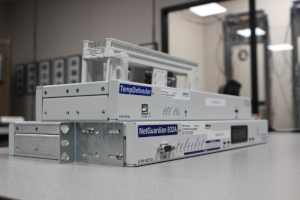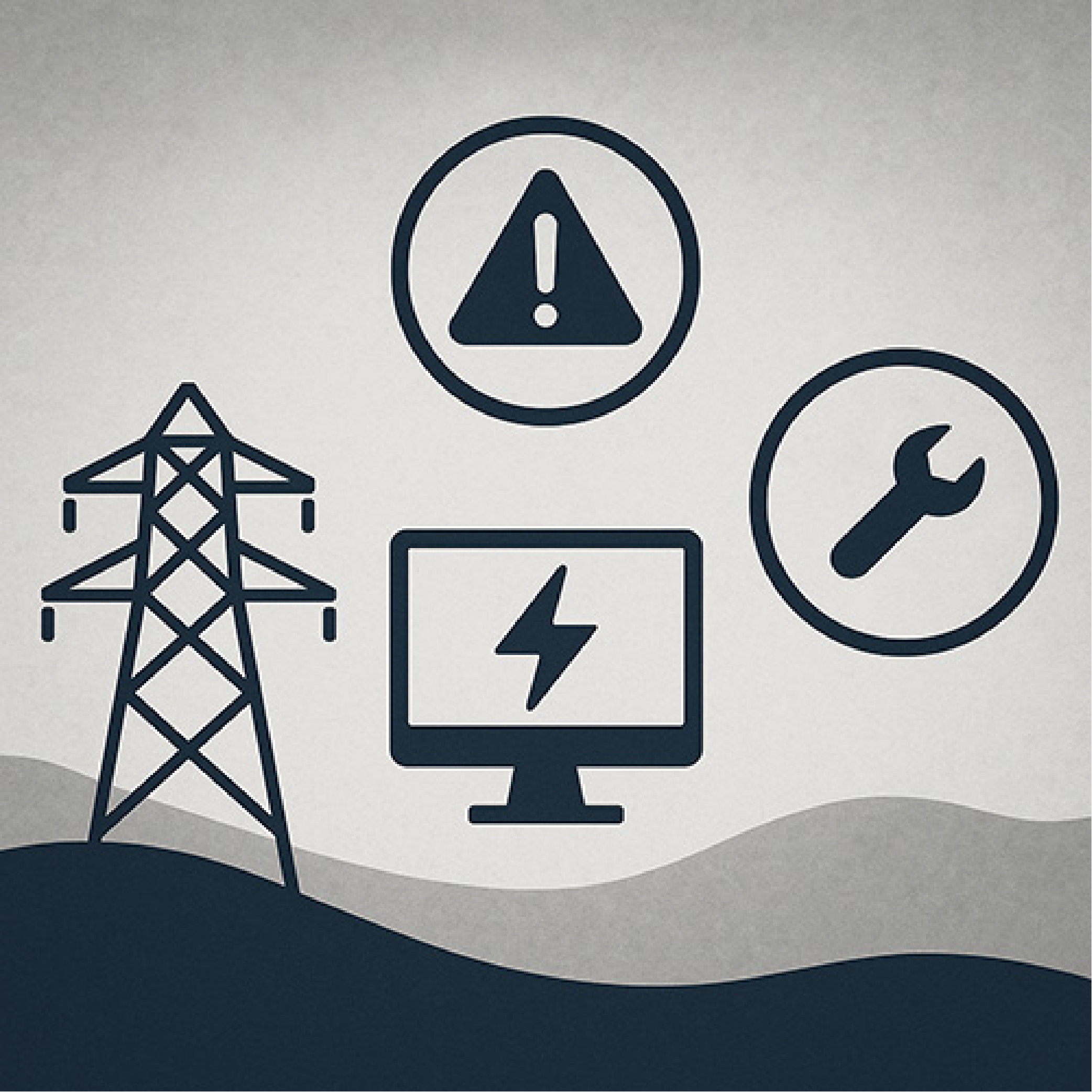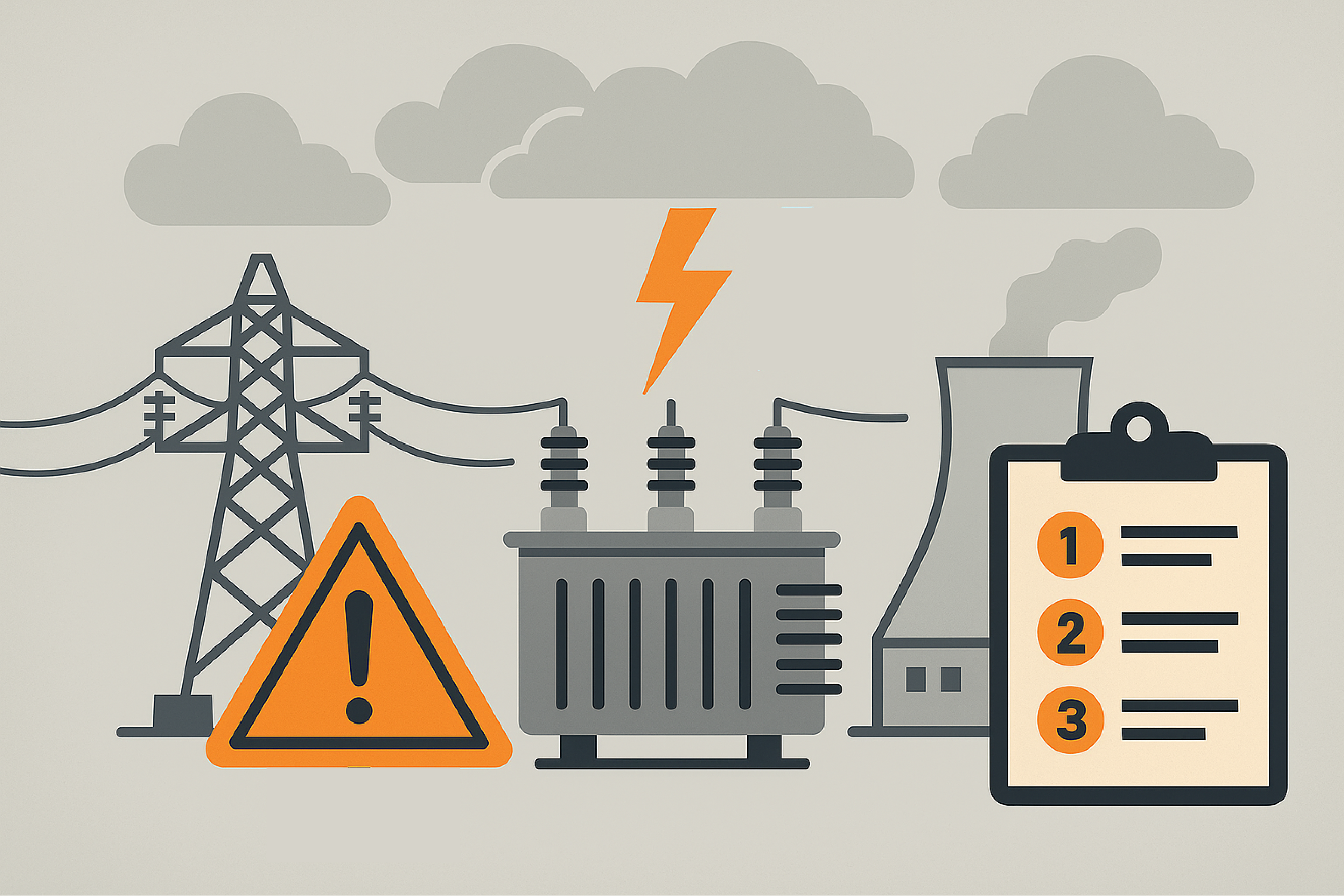Check out our White Paper Series!
A complete library of helpful advice and survival guides for every aspect of system monitoring and control.
1-800-693-0351
Have a specific question? Ask our team of expert engineers and get a specific answer!
Sign up for the next DPS Factory Training!

Whether you're new to our equipment or you've used it for years, DPS factory training is the best way to get more from your monitoring.
Reserve Your Seat TodayThe utility industry has never faced more pressure. You're tasked with delivering ultra-reliable power to more customers (who have higher expectations) than ever - across a massive, interconnected North American grid - with flat or shrinking infrastructure budgets.
That's a dangerous combination.
Without modern upgrades, your grid is more likely to fail under stress. And when it does, you lose more than just power. You lose money, public trust, and control over your regulatory future.
Let's break down the three fatal mistakes that are quietly undermining utilities - and the proven path forward to keep your network online and your reputation intact.

There was a time when your grid had enough safety buffer to limp through high-load events. Maybe it wasn't perfect, but it was "good enough."
Unfortunately, that time is over.
Your legacy systems are now operating under stress levels they weren't designed to handle. Your transmission lines are older. Your substations are carrying heavier loads. Your communication backbones are supporting more devices.
Here's what that looks like in practice:
It's easy to overlook problems when everything appears to be working - until it doesn't.
At that point, you've got a PR nightmare and a regulatory storm headed your way. Even a momentary outage can lead to:
And here's the worst part: it doesn't matter if the root cause was "out of your control." The public doesn't understand the difference between a third-party vendor glitch and a utility-side failure. They also shouldn't have to. They only know they lost power.
Let's say you've got some monitoring gear in place. Great. That's a step in the right direction.
But here's what I've seen time and time again: utilities deploy monitoring systems, but fail to ensure the monitoring itself is bulletproof.
And that's a huge risk.
Take the 2003 Northeast Blackout. Fifty million people lost power. The reason being, according to a post-mortem by the New York Times, the utility at the center of the event was blinded by a monitoring software failure.
"A computer program that was supposed to set off alarms... failed, and control room operators were unaware of major failures on their grid."
There were no alerts or alarms, only silence - until the grid was already in a freefall.
Let that sink in.
They had monitoring systems, but they lacked redundancy. When one piece failed, the whole control center went dark (figuratively and literally).
Here's how this happens in modern systems:
Your team might not even know they're blind until something fails - and by then, it's too late.
Think of it this way: if your communication link dies and you lose all telemetry from a substation, you're operating blind:
If an overload starts, you won't see it. If HVAC shuts off, you won't know until a transformer overheats. If someone breaks into a critical facility, you'll find out when the news does.
If you can't trust your monitoring 100% of the time, you're taking a big risk.
Finally, here's the most common mistake I see: reactive maintenance.
You know the drill:
It's exhausting and it's expensive. Plus, it's completely preventable.
With proactive, intelligent monitoring, you can:
Let's say your site HVAC stops working. A good RTU will detect temperature rise and send an alert before it reaches critical thresholds. A great RTU will also trigger a backup fan or notify an on-call technician automatically, without human delay.
This is the kind of visibility you need across:
In 2025 and beyond, proactive monitoring isn't a luxurious fantasy you can afford to ignore. It's the only way to keep up with the demands of a deregulated, decentralized, high-demand grid.

The ideal scenario involves having:
If something starts to go wrong, you see it before it becomes a crisis. That way, your technicians are dispatched with clear diagnoses, your customers never lose power, and your regulators see you as a model operator.
That's what modern monitoring systems - like the ones we build at DPS Telecom - are designed to do.
At DPS Telecom, we specialize in building strong, scalable monitoring systems for critical infrastructure. Over the last three decades, we've helped utilities across the U.S., Canada, and beyond solve the exact challenges we're talking about in this article.
We're not a general IT vendor trying to retrofit our gear for the power industry. We build RTUs, HVAC controllers, alarm masters, and communication gear specifically for utilities, telecom, transportation, and other high-uptime industries.
Our systems are designed to survive extreme conditions, including wide temperatures, power fluctuations, lightning strikes, and EMI. We support all the protocols you need (including SNMP, MODBUS, DNP3, TL1, and legacy interfaces), and we've built some of the most advanced protocol mediation features available.
Whether you're working with a small number of substations or managing a statewide power grid, our gear scales with you.
To give you a starting point, here are several DPS devices commonly used in power utility deployments (some can even run on +125 VDC that some utilities want for remote-site gear):
The NetGuardian 832A G6 is our flagship RTU. This device supports 32 discrete alarms (expandable), 8 analogs, multiple LAN ports, dual power inputs, and advanced SNMPv3 security.
NetGuardian DIN is a compact, DIN-rail mount RTU ideal for smaller cabinets and telecom shelters. This RTU supports flexible I/O and can report alarms over Ethernet or serial.
The HVAC Controller combines intelligent HVAC control with alarm monitoring. The device supports MODBUS and discrete sensors, and includes lead/lag logic for efficient cooling at remote sites.
T/Mon LNX is a powerful, multi-protocol master station that centralizes your alarm data from thousands of devices. This master station supports SNMP, DNP3, legacy interfaces, and includes secure web access and report generation.
If you recognize even one of the three mistakes we covered in this article within your current operations, the time to act is now. These aren't minor issues - they're the kinds of gaps that can take down a grid and damage your utility's reputation for years.
The good news is we can help you fix them - without tearing out your entire infrastructure or burning through your annual budget.
Let's have a quick conversation. We'll talk about your current setup, your most pressing vulnerabilities, and what kind of reliability you want to achieve. Based on that, we'll build a custom plan with diagrams, budget pricing, and deployment recommendations tailored to your unique environment.
Call us today: 559-454-1600
Or email: sales@dpstele.com
You'll have a real conversation with people who've built thousands of monitoring systems for utilities just like yours.
You've seen what happens when monitoring isn't taken seriously. Let's make sure that doesn't happen to your grid.

Andrew Erickson
Andrew Erickson is an Application Engineer at DPS Telecom, a manufacturer of semi-custom remote alarm monitoring systems based in Fresno, California. Andrew brings more than 18 years of experience building site monitoring solutions, developing intuitive user interfaces and documentation, and opt...